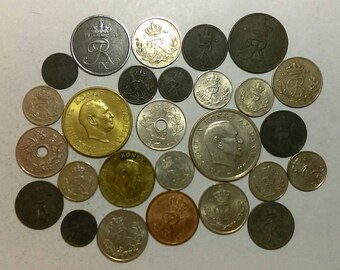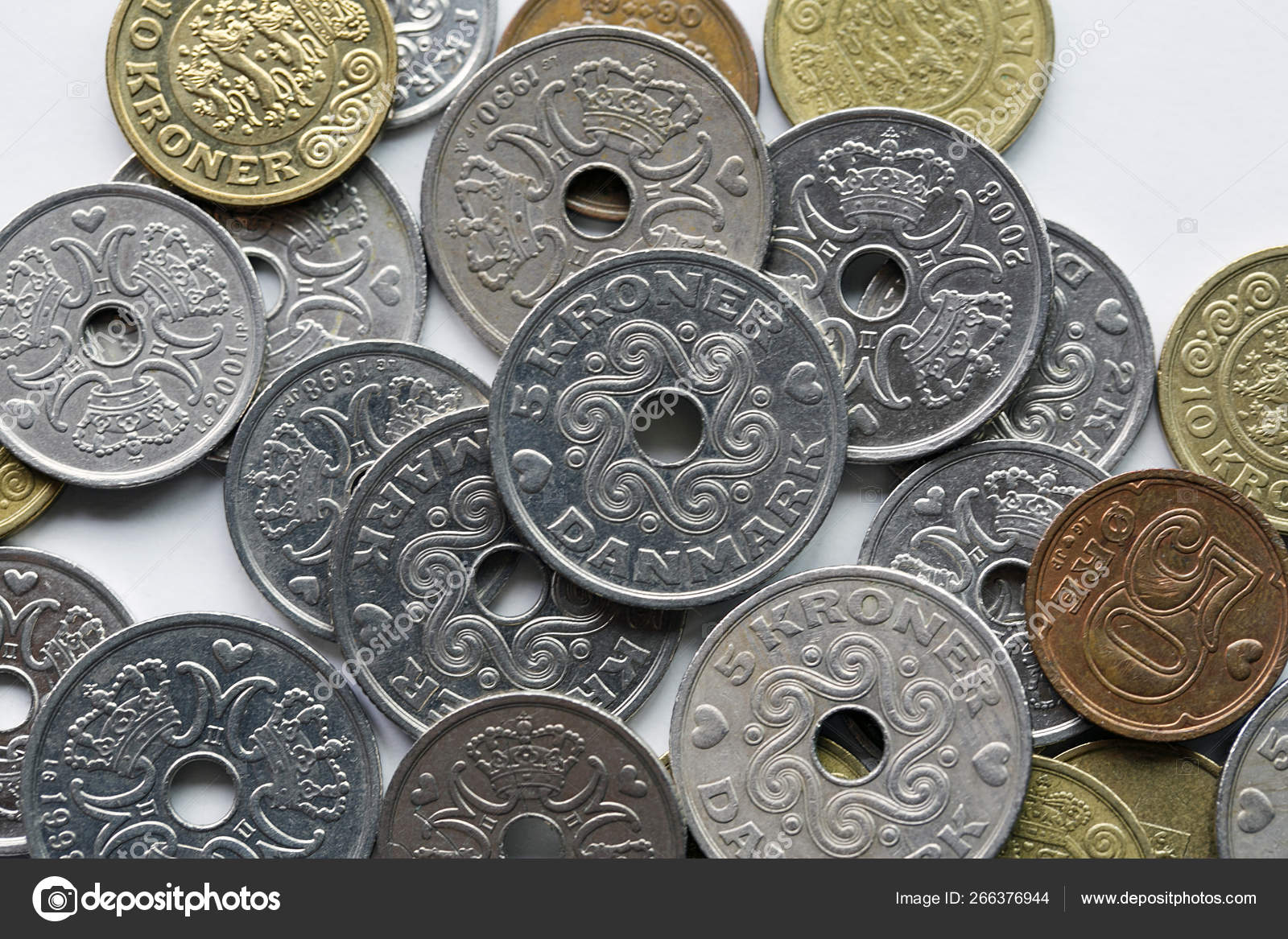Danish Coins

- These coins from Denmark were minted in various denominations (1, 2, 5, 10, and 25 ore) and various metals (bronze, zinc, iron, nickel) between 1948 and 1971. Generally, the zinc and iron coins look dark when found today, as shown in our secondary picture. Leafy embellishments in the pattern do not appear on the smaller denominations.
- Danish coin is a crossword puzzle clue. Clue: Danish coin. Danish coin is a crossword puzzle clue that we have spotted over 20 times. There are related clues (shown below).
Copper Danish Coins. Bronze Danish Coins. More To Explore. 1 Skilling 1771 Denmark. Denmark 2 Kroner. Denmark Kroner In Denmark Coins. Additional site. The obverse of the coin shows the Queen's monogram in a new artistic interpretation, specially designed for the 1-, 2- and 5-krone coins. The monogram is reproduced three times, interlinked by three crowns. The threefold reproduction of the monogram is deeply rooted in the Danish coin tradition.
The National Flag of Denmark is referred to as the “Dannebrog” (Danish flag) and is one of the oldest national flags in the world. The flag was officially adopted in 1625.
The National Flag of Denmark features a solid red field with a white Scandinavian cross that extends to the edges of the flag. The vertical part of the cross is shifted to the hoist side. The white cross represents the Christian religion. The flag has a height-to-width proportion ratio of 28:37.
Danish Coins Crossword
History of the Flag of Denmark
According to a Danish legend, the Danish flag (“Dannebrog”) fell from the sky in Tallinn on June 15, 1219, during an early-13th century Battle of Lyndanisse. The flag was caught up by the Danish King Valdemar II before it ever touched the earth. This heavenly talisman inspired the royal army to victory. In the 14th century, the Dannebrog was used to represent the King and King Valdemar III had incorporated it in his coat of arms. Until 1854, the Dannebrog was solely used by the Danish King and the Royal Navy. Subsequently, its use was allowed for all people.
Other Flags of Denmark
Symbols of Denmark
The National Coat of Arms of Denmark
The current design of the National Coat of Arms of Denmark was adopted by King Frederick VI in 1819.
It features three crowned blue lions facing left and surrounded by nine red hearts. All of which is placed atop a golden shield. The crown on the shield is the crown of King Christian V.
National Motto
'Guds hjaelp, Folkets kaerlighed, Danmarks styrke.' ('God's Help, the People's Love, Denmark's Strength.')
National Anthem
- Anthem Title: Der er et yndigt land (“There is a lovely land/country”)
- Composer: Hans Ernst Krøyer
- Lyricist: Adam Oehlenschläger
- Date of Adoption: 1835
Denmark has two national anthems: 'Der er et yndigt land'(English translation: There is a lovely land/country) and 'Kong Christian stod ved højen mast' (English translation: King Christian stood by the lofty mass). Both are celebrated with equal status in the country but are used for different purposes. 'Der er et yndigt land' is the country's civil national anthem, 'Kong Christian stod ved højen mast' is used for royal and military events. Denmark is the only country aside from New Zealand to have two official national anthems in the world.
'Der er et yndigt land ' was officially adopted in 1835, with its lyrics written by Adam Oehlenschläger. Hans Ernst Krøyer composed the musical score for the song. It initially had 12 verses, but over time, the song was shortened to only include the first, third, fifth, and final verse. Nowadays, only the first stanza and the final three lines of the fourth verse are commonly sung.
'Kong Christian stod ved højen mast' is traditionally sung after the strike of midnight during New Year's Eve. The song celebrates the heroic acts of Danish sailors while in the middle of 17th and 18th centuries wars versus Sweden. It is also acknowledged to be one of the oldest national anthems in the world and was adopted in 1780. The lyrics to 'Kong Christian' were first identified in May of 1773 in The Fishermen, a vaudeville play by Johannes Ewald. It was first performed during the birthday celebrations of King Christian VII in January 1780 at the Royal Danish Theatre. Only the first verse of the song is sung on official occasions.
'Der er et yndigt land' (Danish)
Der er et yndigt land,
det står med brede bøge
nær salten østerstrand :
Det bugter sig i bakke, dal,
det hedder gamle Danmark
og det er Frejas sal :
Der sad i fordums tid
de harniskklædte kæmper,
udhvilede fra strid :
Så drog de frem til fjenders mén,
nu hvile deres bene
bag højens bautasten :
Det land endnu er skønt,
thi blå sig søen bælter,
og løvet står så grønt :
Danish Silver Coins
Og ædle kvinder, skønne møer
og mænd og raske svende
bebo de danskes øer :
Hil drot og fædreland!

Hil hver en danneborger,
som virker, hvad han kan! :
Vort gamle Danmark skal bestå,
så længe bøgen spejler
sin top i bølgen blå :
Official First Verse of the Royal Anthem:
Kong Christian stod ved højen mast
i røg og damp;
hans værge hamrede så fast,
at gotens hjelm og hjerne brast.
Da sank hvert fjendtligt spejl og mast
i røg og damp.
Fly, skreg de, fly, hvad flygte kan!
hvo står for Danmarks Christian
hvo står for Danmarks Christian
i kamp?
There is a lovely land/country
There is a lovely country
it stands with broad beech-trees,
near the salty eastern shore
It bends itself in hill, valley,
its name is old Denmark
and it is Freya's hall.
There sat in former times,
the armour-suited warriors,
rested from conflict
Then they went forward to the enemies' injury,
now resting are their bones
behind the mound's menhir.
That country is still lovely,
because the sea waves so blue frolic,
and the foliage stands so green
And noble women, beautiful maidens,
and men and brisk swains
inhabit the Danes' islands.
Hail king and fatherland!
Hail every honourable citizen,

who works, what he can
Our old Denmark shall endure,
as long as the beech-tree mirrors
its top in the blue wave!
Official First Verse of the Royal Anthem:
King Christian stood by the lofty mast
In mist and smoke;
His sword was hammering so fast,

Through Gothic helm and brain it passed;
Then sank each hostile hulk and mast,
In mist and smoke.
'Flee!' shouted they, 'flee, he who can!
Who braves of Denmark's Christian,
Who braves of Denmark's Christian,
In battle?'
The Currency of Denmark is the Danish krone
The current official currency of Denmark is the Danish krone (kr, DKK) that was introduced on January 1, 1875. The term ‘krone’ translates to 'crown,' and therefore the currency is sometimes referred to as the Danish crown. One krone has denominations of 100 øre. A referendum held in 2000 in the country resulted in the rejection of the introduction of the euro.
The Danish krone circulates in Greenland as the Greenlandic krone. Another version of Denmark’s currency circulates in the Faroe Islands, called the Faroese króna, with its distinct banknotes. The Danish coin series is used in the Faroe Islands.
Coins
Currently, Coins of denominations 50-øre, 1,2,5,10,20 kroner are in use. Different series of the Danish krone coins bear different colors and designs in a bid to differentiate them. The 50 øre coins come in copper and are minted using bronze. The one, two, and five knone coins are silver-colored and composed of cupronickel alloy. The 10 and 20 knone coins are distinctive in their golden aluminum bronze. The 50 øre coins, as well as the 10-krone coins, are minted with smooth rims in contrast with the interrupted milling of the two and twenty knone coins. The one- and five-krone coins have their rims milled. The one, two, and five-krone coins also have a hole at the center. These properties enable the blind to distinguish between the coins.
Banknotes
Banknotes issued from 1945 range in denominations from 5 to 1000 kroner. The first series was dubbed the Portrait and landscape series, and it circulated from 1952 to 1964. This series featured the values 5, 10, 50, 100, and 500 kroner. The Jens Juel series began circulating in 1975, where the notes featured a painting done by Jens Juel located on the obverse side. Another series was unveiled in 1992 in values of 50, 100, 200, 500, and 1000 kroner. The Bridges series was initiated in 2006 and came into force in 2009. The notes in this series feature Danish bridges in addition to the surrounding landscapes, and they come in the values of 50, 100, 200, 500, and 1000 kroner. Currently, banknotes of denominations 50,100, 200,500,1000 kroner are in use.
Danish krone Coin
Historical Currencies of Denmark
A penny made from AD 825 until 840 remains the oldest Danish coin. Harald Bluetooth organized the first systematic mining in the late 10th century, which introduced the Korsmønter (cross coins). Canute the Great boosted production in the 1020s and established minting centers in regions such as Lund, Ribe, Odense, Hedeby, and Roskilde. For nearly 1,000 years, most Danish kings have introduced coins bearing their monogram, names, and even portraits. The Carolingian silver standard formed the basis of the territory's coinage. The periodical practice of reducing the metal value of the coins produced to generate revenue for the state and the monarch led to the loss of public trust in the coins. To rectify this situation, the Danish currency had to be overhauled several times. A new currency was unveiled in Denmark in 1619 by the name krone (crown). A new krone replaced the initial one in January 1875. The krone was previously on the gold standard, but Denmark abandoned it permanently in 1931. A decision to outsource production of the Danish krone was reached in 2014.
Up-to-Date Foreign Currency Values
To make it easy for you to look up foreign coin values, we've curated this listing.
This is a presentation of information traditionally found in CoinWorld's monthly magazine, now brought together regularly by our expert coin valuation analysts.
You can browse our archives here dating back to 2013.
06-01-20 - Euro Values
Euro Values
06-03-19 - Euro Values
Euro Values
06-04-18 - Euro Values
Euro Values
06/05/17 - Euro Values
Euro Values
Danish Coins Value
03/07/16 - Euro Values
Euro Values
09/05/16 - British Values
British Values
07/04/16 - Canadian Values
Canadian Values
09/07/15 - British Values
British Values
07/06/2015 - Canadian Values
Canadian Values
03/02/2015 - Euro Values
Euro Values
05/04/2015 - Mexican Values
Mexican Values
Nov. 2014 Canadian Values
Canadian Values
Sept. 2014 - British Values
British Values
01/06/2014 - Canadian Values
Canadian Values
July 2014 Canadian Values
Canadian Values
05/05/2014 - Mexican Values
Mexican Values
03/03/2014 - Euro Values
Euro Values
09/02/2013 - British Values
British Values
11/04/2013 - Euro Values
Euro Values